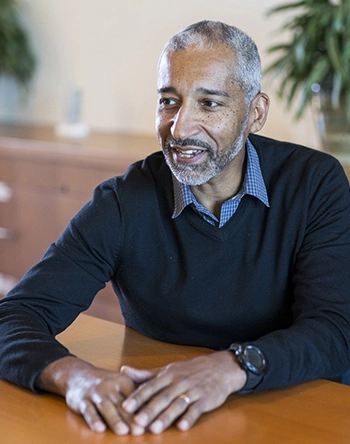Since 2012, Thierry Diagana has served as Head of the Novartis Institute for Tropical Diseases (NITD), a small-molecule drug discovery research institute within the Novartis Institutes for BioMedical Research. In this role, he is focused on discovering new medicines that contribute to the elimination of infectious diseases like malaria. He described his team’s progress during a recent conversation about NITD and its future.
What drove you to join NITD?
I joined Novartis in 2007, mainly for malaria. Today, as we see many people infected with drug-resistant parasites, I look back and feel very much validated in my decision to join because there is a growing unmet need for new drugs, which we anticipated at Novartis.
What has NITD achieved with respect to malaria?
We have two drugs in the pipeline that could address the perennial challenge of drug resistance. One of them is KAF156, which could turn out to be a potential game-changing therapy. It not only combats the two main parasites responsible for most malaria deaths but is also active against the blood and liver stages of the parasite’s lifecycle. This is what needs to be targeted if we want to both treat and prevent malaria, which kills almost half a million people every year – most of them children.
If it was possible to eliminate smallpox in a time when there was no internet…then we should aim high and achieve the same for malaria and other diseases.
How far advanced is this compound?
Currently, Novartis is testing the drug in a clinical trial in Mali together with Medicines for Malaria Venture (MMV) and with the support of the Bill & Melinda Gates Foundation. This is a great step for us, as it means we are making good on promises that we can get the drug to the people who need it most early on. With this step, we are also providing the knowledge and technical equipment for running early clinical trials to doctors and nurses in the most exposed regions. In the past, these regions lacked both the know-how and infrastructure to execute such tests, which are a vital step in the drug development process. This knowledge transfer is of paramount importance if we want to control and eliminate malaria in the future.
How is the other malaria compound progressing?
The second compound, called KAE609 – which we have tested in a small trial in Thailand – has shown itself to be effective against two parasites, including strains that seemed to be resistant to current malaria treatments. The compound was discovered through joint research with the Novartis Natural Products Research Group, the Genomics Institute of the Novartis Research Foundation, and the Swiss Tropical and Public Health Institute. The research was also supported by the Wellcome Trust, the Singapore Economic Development Board and MMV. It is a great collaboration.
Is this collaborative approach a typical process for NITD?

Collaboration and partnership are essential for us. NITD can only thrive if we stay connected and work together with other like-minded organizations. To advance our research programs and make sure that they have an impact, we are very dependent on our partners such as the Gates Foundation, the Wellcome Trust and the Swiss Tropical and Public Health Institute, to name a few. But there are also many grassroots efforts from colleagues within Novartis that are helping to advance our projects. Over the years, many people have come to support our programs. One of them was Eric Francotte, a pioneer in separation technology. He approached us and asked how he could help out and set resources aside to get it all going. He is just one of many people who have come and are continuing to come from all corners of the company to help us achieve our goals.
